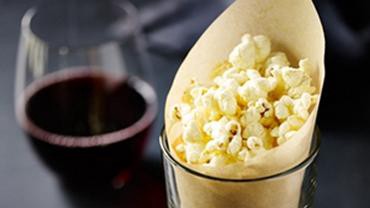The Starbucks Booze Worst-Case Scenario

Does this Williamsburg coffee shop owner sound a little paranoid? Sure:
Bell, who leaped into action this week after finding out about Starbucks’ plan to sell alcohol, said granting the chain a liquor license could embolden the company to seek a more and more. She said there could end up being a Starbucks-affiliated business on every corner, making it one of the only places to go.
It does not seem to be Starbucks’ plan to open a “Starbucks beer garden, a Starbucks sports bar,” or anything quite like that. But I do think the Starbucks alcohol initiative — there are locations with a “Starbucks Evenings Menu” in Chicago, Portland, Los Angeles and Atlanta — represents something potentially big and, for a particular type of establishment, ruinous.
In some towns, bars are holdouts — some of the only non-chain (or at least non-national-chain) establishments available to patronize. Chicago and Portland and Los Angeles and Atlanta are not these towns, so while they might be good markets for Starbucks to test out new concepts for viability, they’re poor markets for understanding what effects the introduction of Starbucks wine bars might have on smaller, more fragile commercial ecosystems. They can absorb a lot.
Anyone looking to understand chain-booze paranoia should look to the UK’s experience:
[Large pub companies] have about one-third of Britain’s pubs in their portfolios. Punch and Enterprise — two of the largest of an estimated total of about 50,000 pubs in England, as of 2012 — hold about 4,000 and 6,000 leased or tenanted pubs, respectively, and are trying to cut debt built up through acquisitions during the boom years of the 1990s and early 2000s, before the recession.
Many pubs are owned outright by these companies; others are operated in a strange sort of franchise mode, in which they are “tied” — they pay both rent on the building and “wet rent” on drinks, the availability and price of which are decided by large pub companies who are able to charge significantly above-market prices. The effect can be depressing in subtle ways: You might only realize that you’re in a chain pub after you see a food menu with a familiar color scheme, or when you spot a drink special that you’ve seen before. This is just as if not more likely to happen in a small town, in a beautiful old building, as it is in a new place in a large city. It’s a strange feeling, to realize that the establishment you’re in is concealing its identity out of savvy or shame, a little like finding out that your fancy soap in the over-designed bottle is sold by the same company that makes the bleach under your sink. (The biggest British pub companies, incidentally, are currently attempting to expand into coffee. Every chain wants to be every other chain.)
Anyway: The alt-contemporary Starbucks nightlife dystopia is neither currently real nor particularly close. (Chain fast-casual restaurants are probably a much larger threat to independent American bars than Starbucks will ever be, and might have already won — they can materialize out of nowhere with a decent, inoffensive bar experience and a much better food experience than their smaller booze-centric competitors.) But a limited version is plausible: A near-future situation in which Starbucks successfully turns its thousands of centrally located coffee shops into safe and predictable places to meet someone and have a glass of wine and some olives and cheese or whatever. Basically, Starbucks could conceivably corner the Tinder/Match/OkCupid first-date market, or the “after-work-one-or-two-drink” market. Which is no small thing! For some people, at some stages of life, in some places, consolidating these morning and evening options into one location might represent near-total social capture. Have you ever been to Starbucks twice in one day, as the company’s loyalty programs aggressively encourage? It doesn’t feel great. Now imagine that feeling with depressants.
